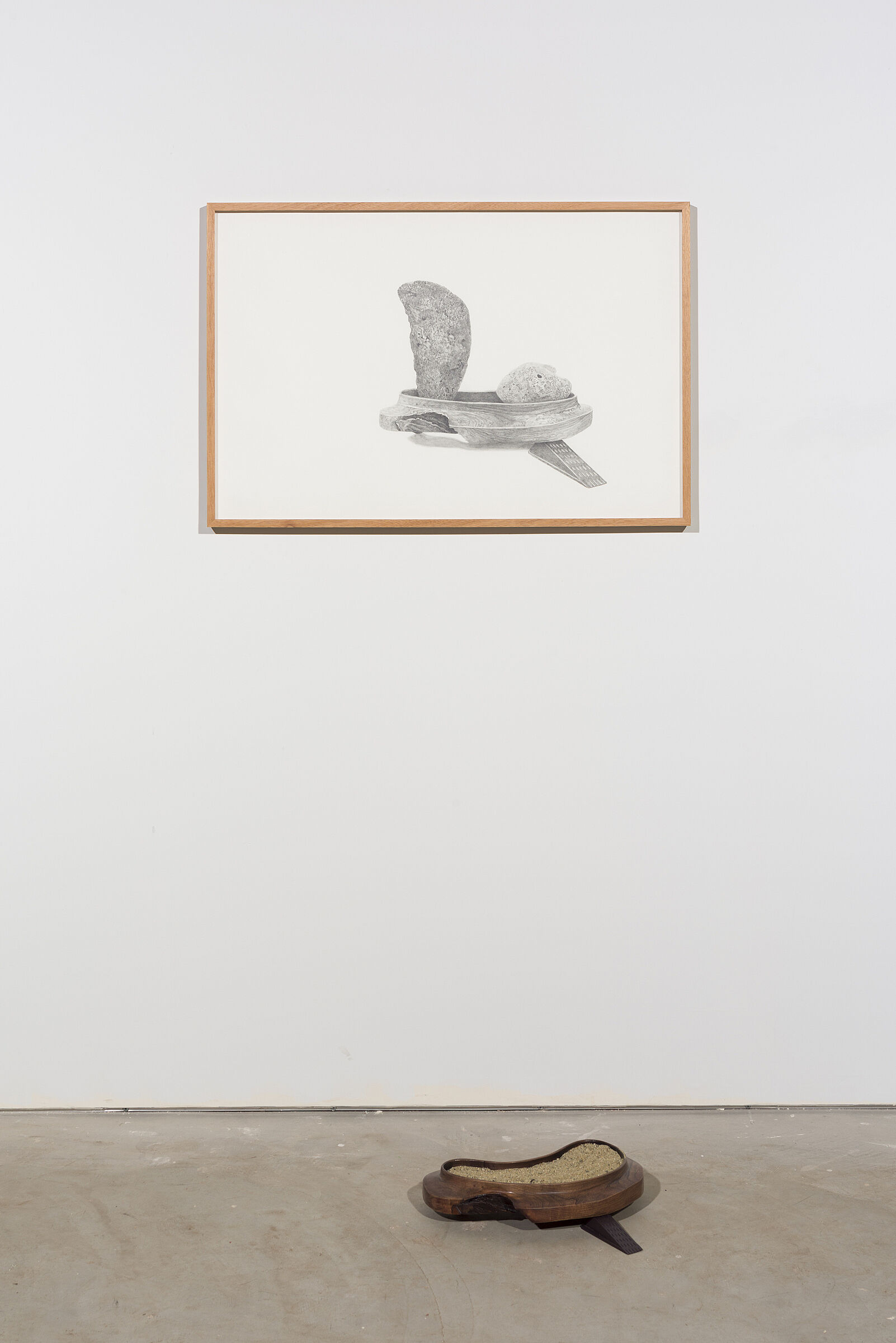Whitney Biennial 2019 | Art & Artists
May 17–Oct 27, 2019
Whitney Biennial 2019 | Art & Artists
Gala Porras-Kim
66
Floor 6
Born 1984 in Bogotá, Colombia
Lives in Los Angeles, CA
How can one understand an ancient Indigenous language that has not yet been deciphered? Gala Porras-Kim seeks to address this question through visual vocabularies that lie beyond historically colonialist disciplines such as anthropology. In the Biennial, her work focuses on La Mojarra Stela 1—a stone, carved with the untranslatable characters of Epi-Olmec script, that was discovered in 1986 and is now in the collection of El Museo de Antropología de Xalapa in Veracruz, Mexico. Porras-Kim’s collection of works propose different approaches to the question of the stela’s meaning. For example, a reflective graphite panel in La Mojarra Stela 1 negative space recalls obsidian mirrors that were sometimes used in ancient Meso-American divination methods to interpret reflections. In other iterations Porras-Kim creates distance or draws attention to the space between characters, allowing viewers to draw their own associations.
Two rocks, one pumice split in half, one generic rock, n.d. reconstruction (doorstop), 2018
-
0:00
Gala Porras-Kim
0:00
Gala Porras-Kim: Hello, my name is Gala Porras-Kim.
I found this stone called La Mojarra Stela 1, that was found in the south of Mexico in 1986 I think. It has this Mesoamerican text that nobody actually knows what it means, and so I thought that since the writing form is so close to a drawing practice, it would be interesting to try and see how to find meaning based on the aesthetic qualities of the text.
The first one is based on the idea of using obsidian mirrors in Mesoamerica. So obsidian mirrors in Mesoamerica were used for divination before, so people would see the reflection and try to understand what they were about, or find something about themselves that they didn't know, or reflect something. So I thought that maybe this method could work and we could try it out.
The second one is an image of the stone to scale where all this text was carved into. So the object in front of it is a device that I made to separate the aesthetic elements of the text. For example, you can separate them by all the circles, or all the lines, or all these other ways of looking for aesthetic connections in the drawing instead of trying to look at the whole thing.
The image of the third one is the outline of all this text, and it has a projection of the different characters moving. So it would be like this randomized, by chance, coincidence way, in case somebody or a viewer can find the connection between the characters.

